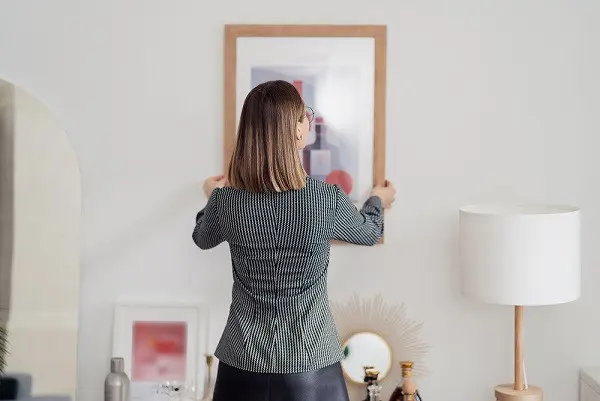THE YEARS LEAVE THEIR MARK ON PROPERTY. REFURBISHMENT IS THE MAGIC WORD.
In this guide, you will find tips from professionals - and also on the subject of remodelling. In addition to age-related renovation, there are other factors that speak in favour of renovation or even conversion. For example, the aim can be to optimise the energy balance so that considerable savings can be made on heating costs. Homeowners should also consider a renovation if they no longer like the room layout. First impressions count. This also applies to property.

Renovation - a beautiful home without a lot of effort. The most important basic requirement for renovation work is a certain amount of manual dexterity. Extensive experience is also very helpful. But this comes almost automatically when cosmetic repairs are carried out.
There is always something to do, to embellish and to renovate in a flat or house. If you do it yourself, you save a lot of money when renovating and also gain a lot of practical experience. A cosy living room, where everything from the floor to the walls to the ceiling is perfect, also makes ambitious DIY enthusiasts really proud. And if you enjoy renovating and DIY, you are sure to find plenty of opportunities to show off your talent in your flat, house and garden.
THE DEVIL IS IN THE DETAIL. WHERE DO I START, WHERE DO I END?
A crooked strip of wallpaper that isn't sticking properly or unevenly covering paint are no problem. What's more, such mishaps can be rectified relatively quickly and easily. However, to avoid unnecessary extra work during renovation, inexperienced DIY enthusiasts should always have an experienced helper at their side. They often know exactly what needs to be done and how to do it.
If you need help or specialist advice in this area, our partners will be happy to assist you. Contact us without obligation and free of charge, WENET AG.

MUST & SHOULD. WHAT ARE YOU OBLIGED TO DO WHEN YOU MOVE OUT?
Renovating can be so easy. We have tips for your personal renovation, suggestions for renovating different rooms as well as your house and flat and explain which cosmetic repairs you need to carry out when you move out and which you do not.
As a tenant, you are obliged to carry out so-called cosmetic repairs in your flat if necessary. For example, if the walls in the kitchen are worn out after five years and in the living room after eight years, then this is the right time to renovate. However, don't just see these measures as an obligation: after all, an attractive flat improves the quality of life. As a tenant, show initiative when it comes to renovations so that your flat remains a place where you feel good.
As a tenant, you can decorate the walls and doors in any colour you like. You may also lay flooring such as laminate or carpet. The general rule is that all measures that do not interfere with the fabric of the building are permitted. However, the landlord can demand that you undo the changes when you move out. Breakthroughs, drilling holes in the exterior façade to install a satellite dish or building in walls, for example, are not permitted without authorisation. Even if you want to re-tile the bathroom, you must obtain permission from the landlord.
When you move out, you must leave the flat in the same condition as when you moved in. If possible, ask your next tenant if he or she would like to keep the colourful walls, for example. In this case, you save yourself the trouble of redecorating.
Remove stains, scratches:
Unsightly stains on the wall or scratches in the parquet - there's always something to do at home. With these tips, you can tackle small construction sites and projects at home quickly and easily yourself.
Replace handles:
The previous tenant's kitchen is still in good condition, but looks a bit dull or old-fashioned? Then you don't have to renovate the entire kitchen.
Wallpapering:
Don't remove the wallpaper, instead wallpaper over it or paint it - a nice idea, but it doesn't work. After all, a smooth wall cannot be created on textured wallpaper or woodchip. What's more, several layers of wallpaper result in unsightly transitions and the stability of the wallpaper pile on the wall leaves a lot to be desired over time. What had to be on the wall just a few years ago - dark floral patterns, borders or woodchip - should now be taken down again as quickly as possible. Or no longer adheres properly, is riddled with poorly concealed nail and drill holes and has simply become unsightly over time. And the same applies to wallpaper: anything that no longer appeals, but catches the eye every day and puts you in a bad mood, can go at some point. So get rid of the old wallpaper.
Paint the walls:
White is still the classic wall colour. Colour is a matter of taste and anyone can paint? Not quite: these are the biggest pitfalls when painting walls - and tips on how to avoid them. Light grey? Looks great in all the Scandinavian living room examples. Dark Bordeaux? Is the trend colour of the year. And in your own home? The solution: To get an idea of your desired colour on the wall, the manufacturer's colour charts are an important first point of reference. These are available from specialist retailers or online in the relevant shop. At home, simply hold them up to the wall or attach them with a piece of adhesive tape and look at them again and again in the changing light throughout the day. In addition, many manufacturers of wall paints have mini colour pots especially for test coats. Brush a large square onto the wall and see how the colour looks and whether you like it.
To avoid running out of paint in the middle of painting or having buckets of paint left over, you should calculate how much paint you actually need before buying. To do this, measure the area to be painted, take the length times the width and multiply the result by the consumption per square metre.
For example: 5 m x 3 m = 15 sqm /15 sqm x 150 ml/sqm = 2,250 ml = 2.25 litres
This consumption is a good guide value. However, it also depends on the respective substrate. As the information on the product packaging refers to smooth walls and the range is reduced on coarser surfaces such as woodchip and textured wallpaper, add around 20 % more as a general rule.

RENOVATE BEFORE REFURBISHING, OR VICE VERSA?
The differences: renovating, refurbishing and modernising
The terms renovation, refurbishment and modernisation are often used interchangeably because the measures cannot always be clearly separated or one requires the other.
Put simply, renovation measures are embellishments, repairs are made during refurbishment and renovations or improvements are made during modernisation. Anyone who paints, wallpapers and lays flooring is renovating. If mould is removed and a roof with holes is resealed, this is a refurbishment. A new heating system, new windows or an age-appropriate conversion are modernisation measures.
As a tenant, however, you are only responsible for the renovation. Your landlord or property owner is responsible for everything else.
Would you like to be kept up to date with our blog articles?
Then sign up for the WENET newsletter right here below!
